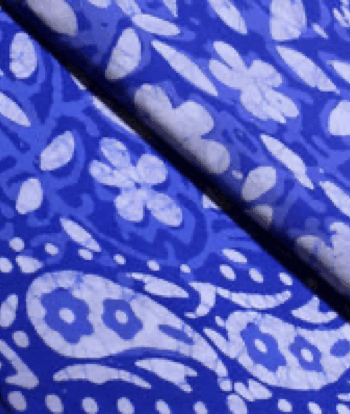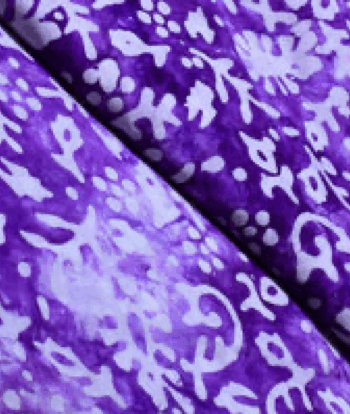On a recent journey through Gujarat, India, we had the incredible opportunity to visit several workshops dedicated to the ancient art of wax batik fabric printing. Watching the artisans at work was mesmerising — a timeless dance of wax, dye, and cloth that has been practiced for centuries. Even more impressive was learning that these artisans recycle up to 80% of the wax used in each process, a testament to their deep respect for both tradition and sustainability.
We wanted to share more about the history of batik printing in India and how this intricate technique is performed.
Batik in India
While batik is often associated with Indonesia, India has its own rich and ancient batik traditions. In fact, historians believe that batik techniques were practiced in India as early as 2,000 years ago. Ancient Indian traders and travellers are thought to have carried these techniques to Southeast Asia, where they evolved into the distinctive styles we associate with Indonesia today.
In India, batik developed primarily in the states of Gujarat, Rajasthan, Madhya Pradesh, and parts of West Bengal. Gujarati batik, in particular, is known for its bold, colourful designs and intricate motifs often drawn from nature, mythology, and village life. Traditionally, artisans in Gujarat used natural dyes and beeswax, and the fabrics were mainly cotton and silk.
Batik’s prominence in India waned for a time but experienced a revival during the early 20th century, partly due to a renewed appreciation for handcrafted textiles during India’s independence movement. Today, places like Gujarat remain important centres for batik artistry, keeping alive this beautiful heritage.
Many of the batik workshops we visited in Gujarat were not large factories, but rather family-run operations set up within their homes. Generations of artisans work side by side — parents teaching their children, grandparents passing down stories and techniques that have been honed over centuries. In these home workshops, many members of the family play a role, whether it’s preparing fabric, heating the wax, applying the designs, or handling the dyeing and finishing. This tradition of keeping the craft alive within the family home not only preserves the intricate skills of batik printing but also strengthens the bonds between generations, blending heritage, livelihood, and artistry into everyday life.
Check out a clips of our visit on Instagram or Facebook.
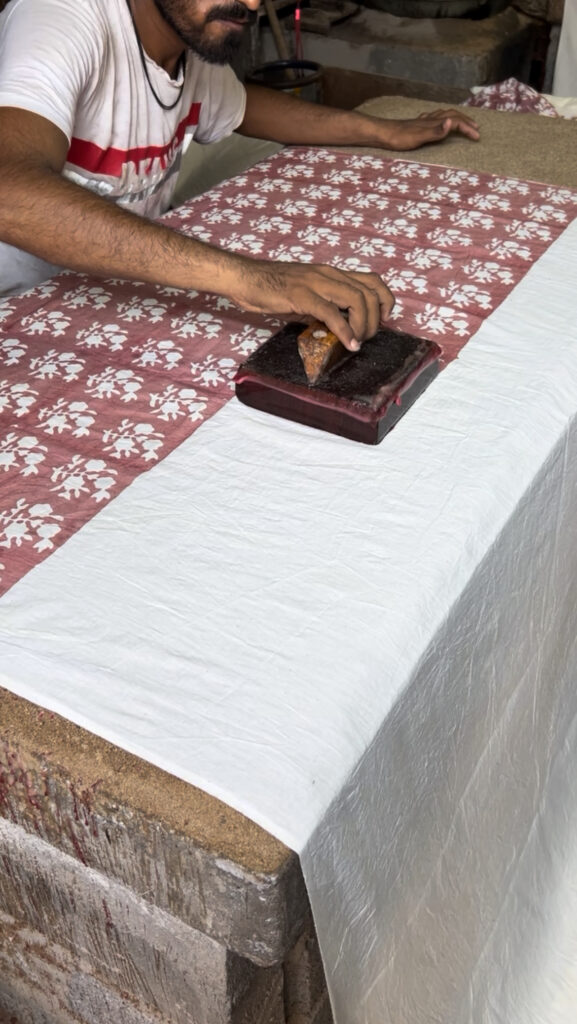
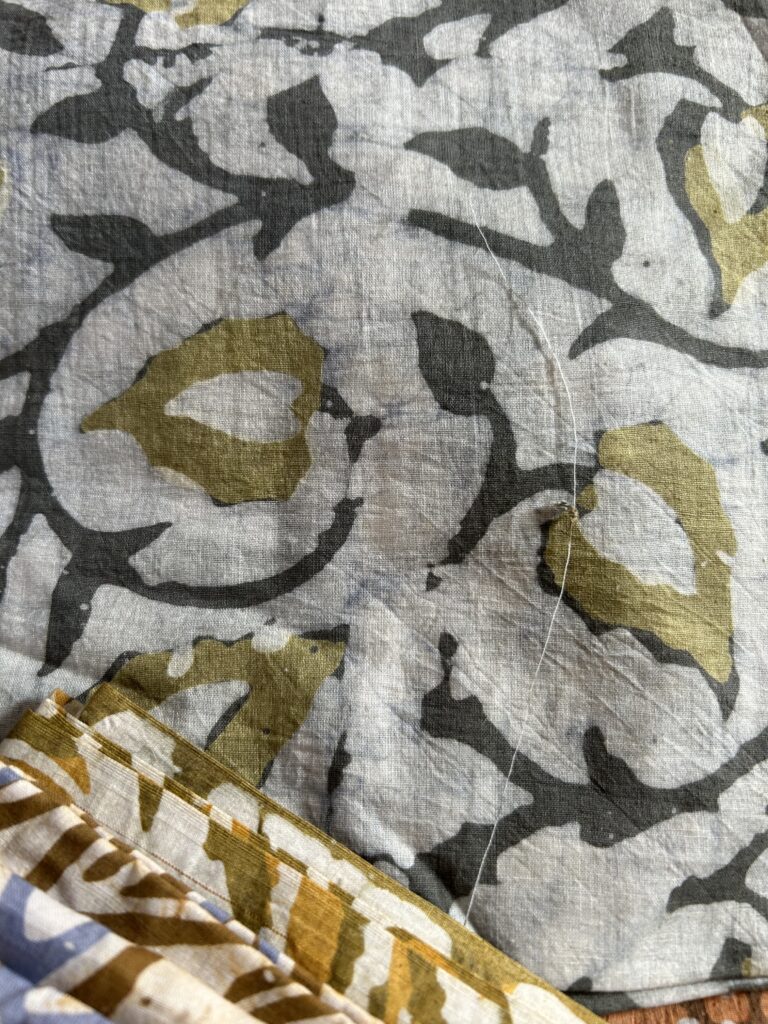
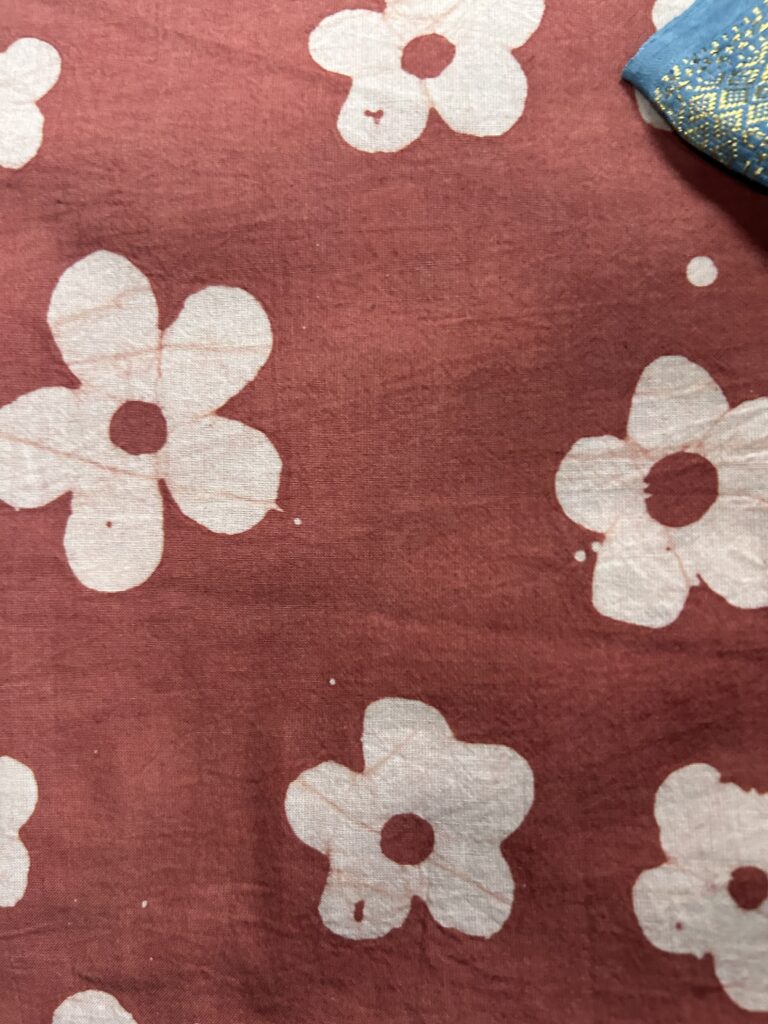
How Wax Batik Printing Is Done: Step by Step
Our visits to the workshops gave us a front-row seat to the fascinating and labor-intensive process of batik printing. Here’s a simplified overview of the steps:
1. Preparing the Fabric
The process begins with selecting high-quality cotton or silk fabric. The fabric is washed thoroughly to remove any impurities that might prevent the dyes from adhering properly.
2. Drawing the Design
Artisans either sketch designs freehand or use wooden blocks carved with traditional motifs. Every line and shape must be carefully considered, as this will dictate where the wax is applied.
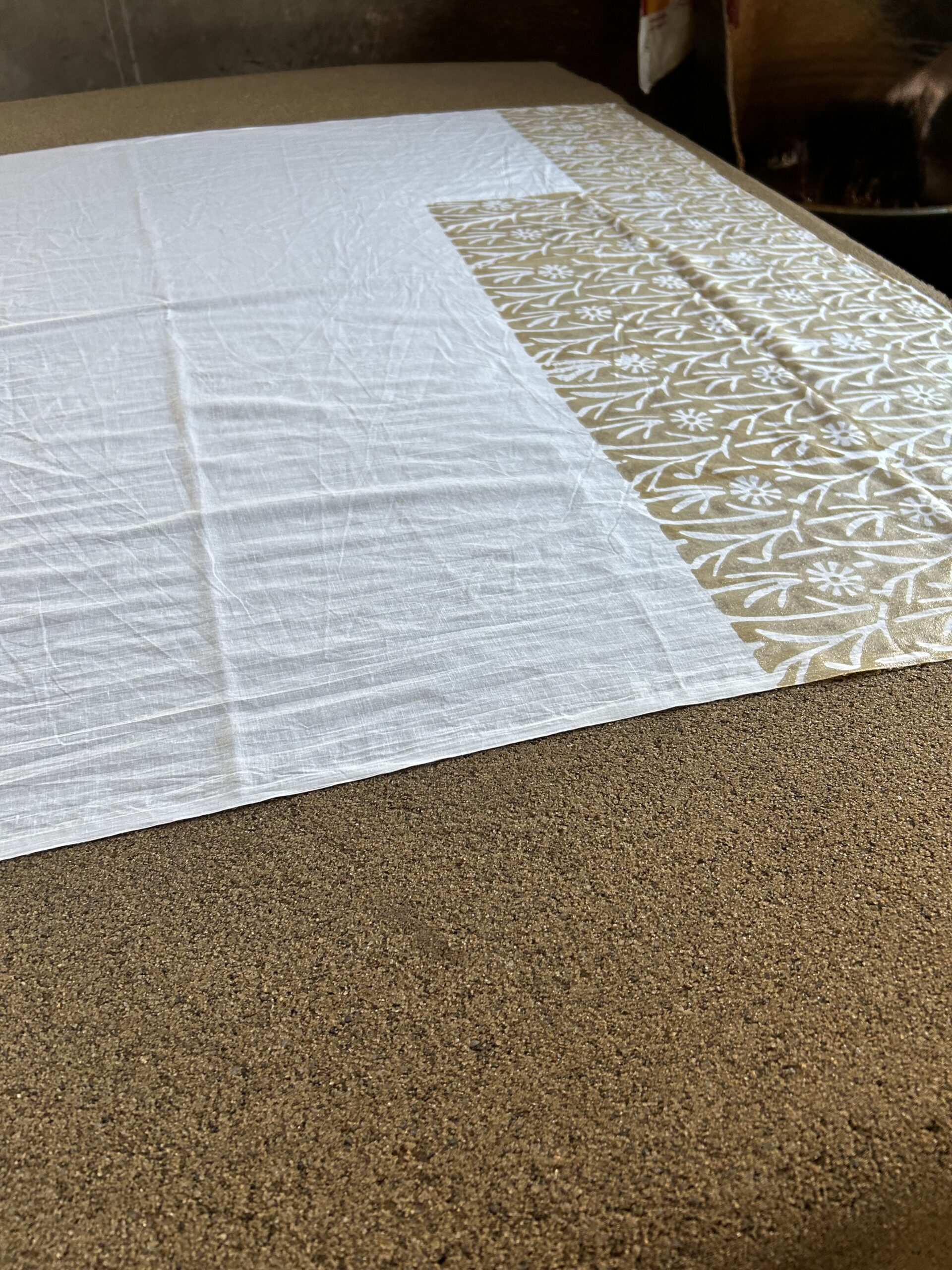
Before any wax is added, the fabric is stretched and laid flat over a bed of damp sand. The sand provides a slightly cushioned surface, helping the wax set more quickly yet still be able to penetrate the fibres evenly without bleeding or soaking through. It also supports the delicate fabric and prevents it from sticking or slipping during the intricate work.
3. Applying the Wax
Hot wax (often a mixture of beeswax and paraffin) is applied to the fabric using brushes, spouted tools called tjantings, or carved wooden blocks. Wherever the wax sits, the fabric will resist dye and remain its original colour.
The workshops we visited in Gujarat used wood blocks to print the fabric. Like block printing, they often had a set of blocks to build up intricate designs.
Fun fact: In the workshops we visited, artisans proudly explained that they reuse about 80% of the wax. After dyeing, the wax is melted off, filtered, and used again — a clever and eco-friendly tradition.
4. Dyeing the Fabric
The fabric is then dipped into a dye bath. The areas not covered in wax absorb the dye, while the waxed areas remain untouched.
If multiple colours are desired, the fabric undergoes several rounds of waxing and dyeing — with wax applied again to protect previously dyed sections.
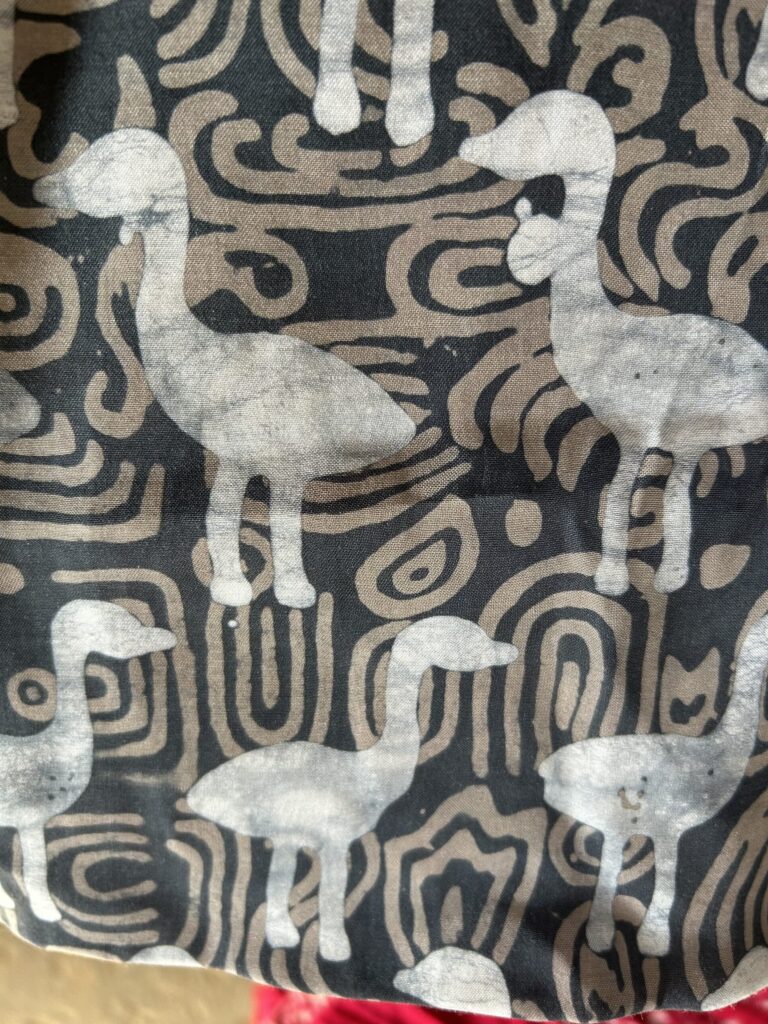

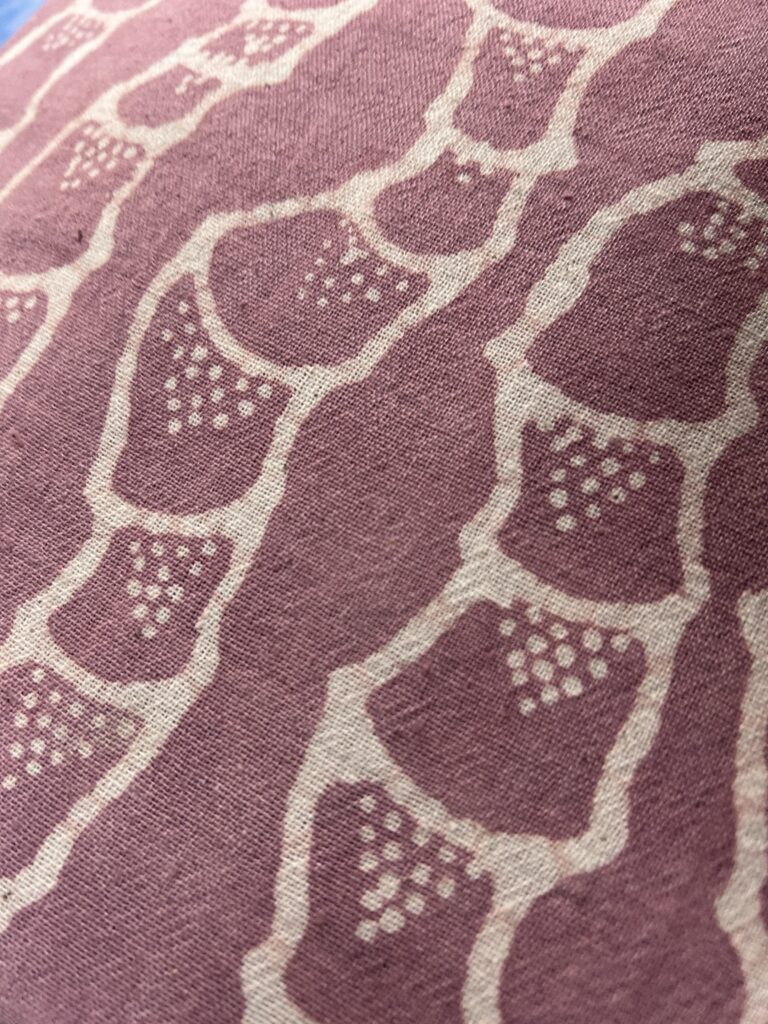
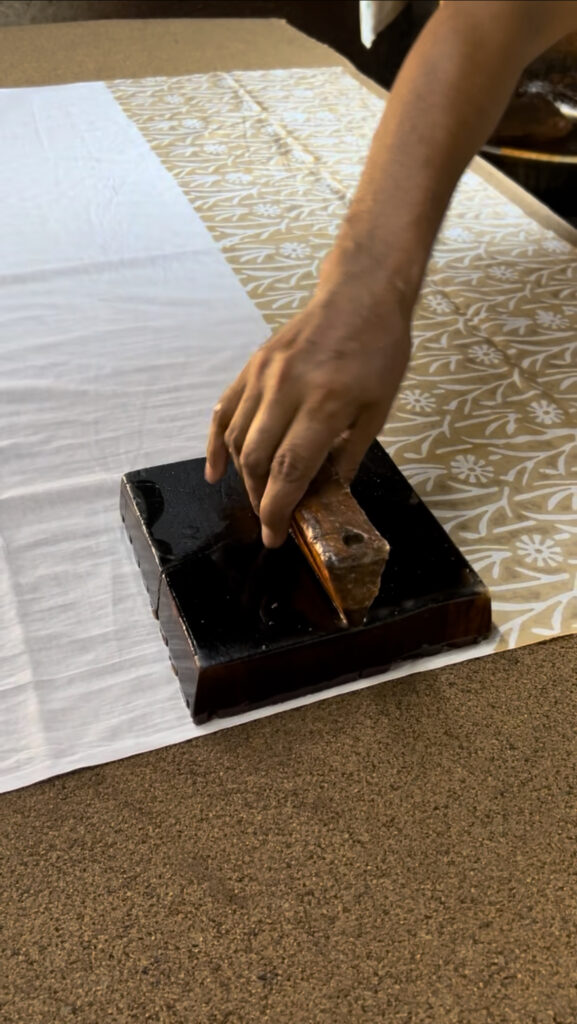
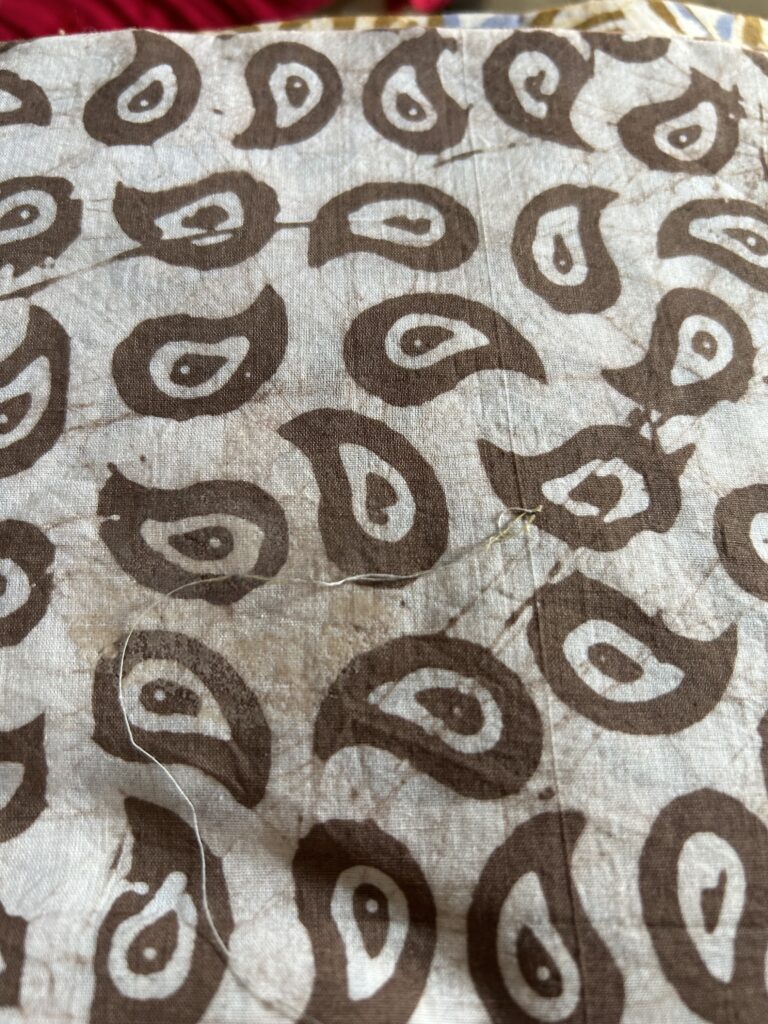
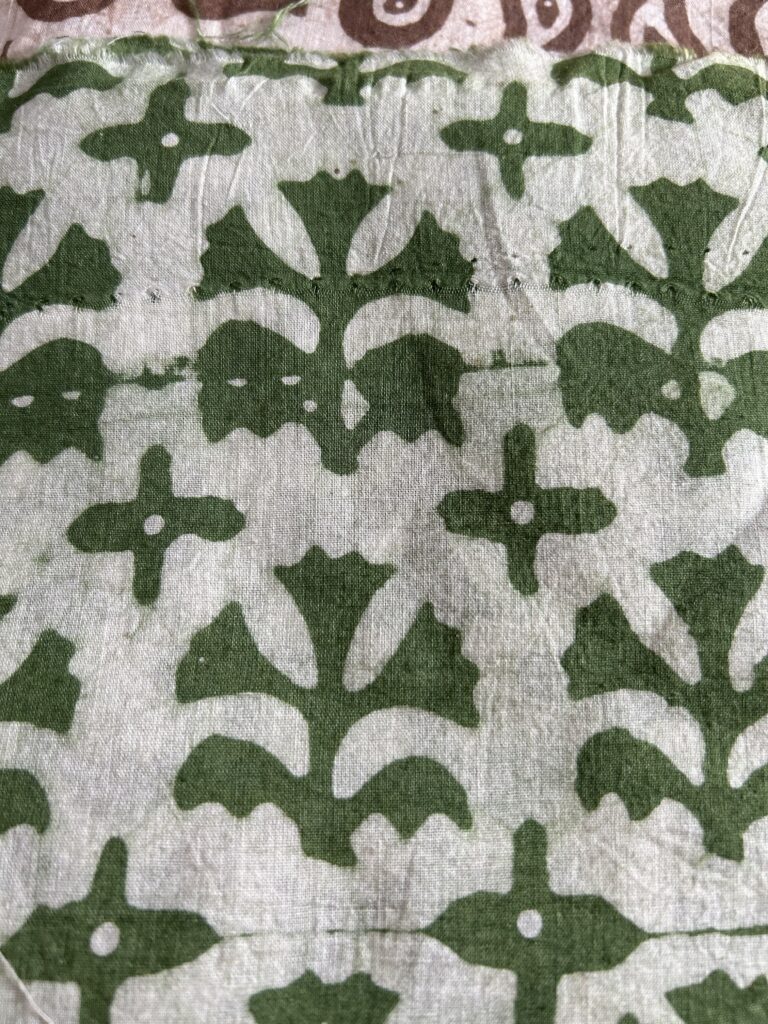
5. Removing the Wax
Once the dyeing is complete, the fabric is boiled in hot water, or ironed between layers of absorbent paper, to melt and remove the wax, revealing the final pattern.
6. Finishing Touches
Finally, the fabric is washed, dried, and ironed. The result is a stunning, often multi-colored piece of art that reflects both meticulous technique and creative vision.
Seeing the process firsthand made it clear that every batik fabric carries a story — of hands that skillfully apply wax, eyes that envision beauty, and hearts that honor centuries of tradition.
Our shop has a range of wax batik fabrics.
Hot tip: Keep your eye on our arts and crafts tours in Gujarat where you can try your hand at was batik printing.
Recommended products
-
Blue Hand Wax Batik Cotton Fabric 1.50 Metres
Original price was: $23.95.$16.76Current price is: $16.76. -
Multicolour Hand Wax Batik Cotton Fabric 1.45 Metres
Original price was: $21.95.$15.36Current price is: $15.36. -
Orange Tie and Dye Wax Batik 1.90 Metre Piece
Original price was: $28.95.$20.26Current price is: $20.26. -
Purple Hand Wax Batik Cotton Fabric 1.45 Metres
Original price was: $21.99.$15.39Current price is: $15.39.

